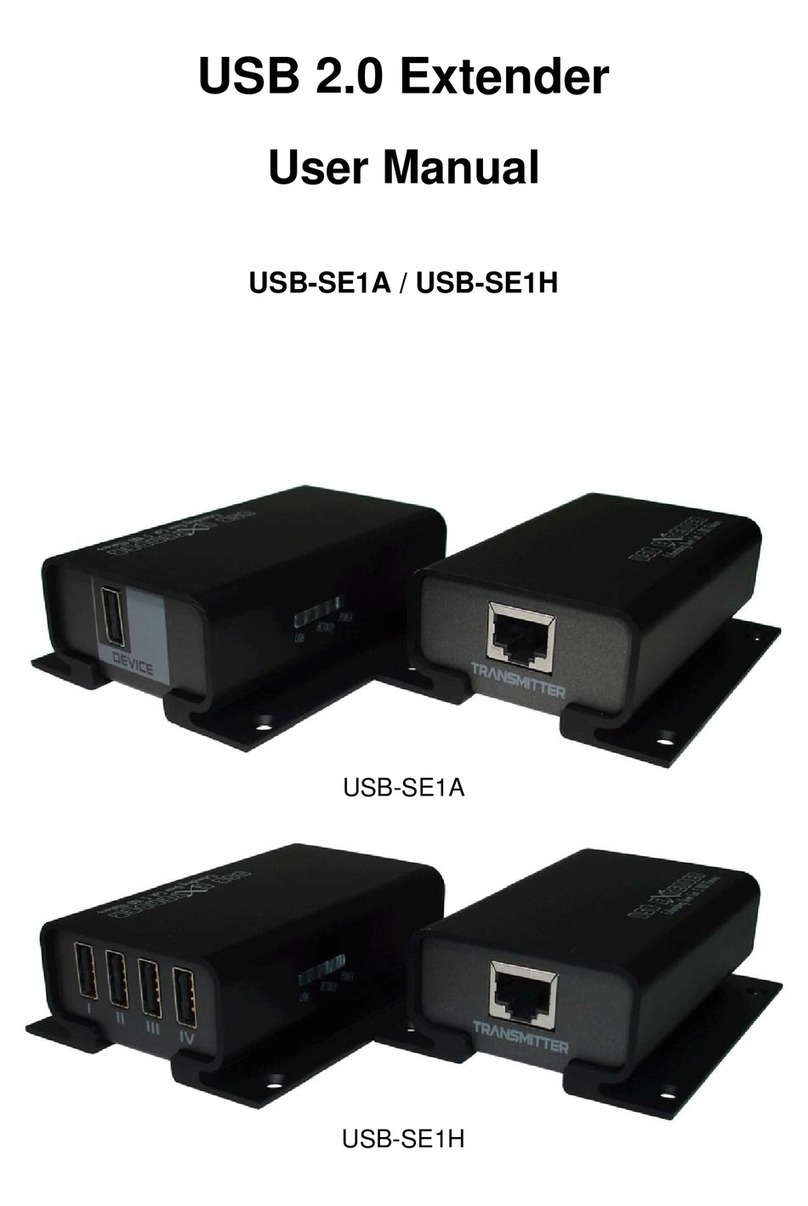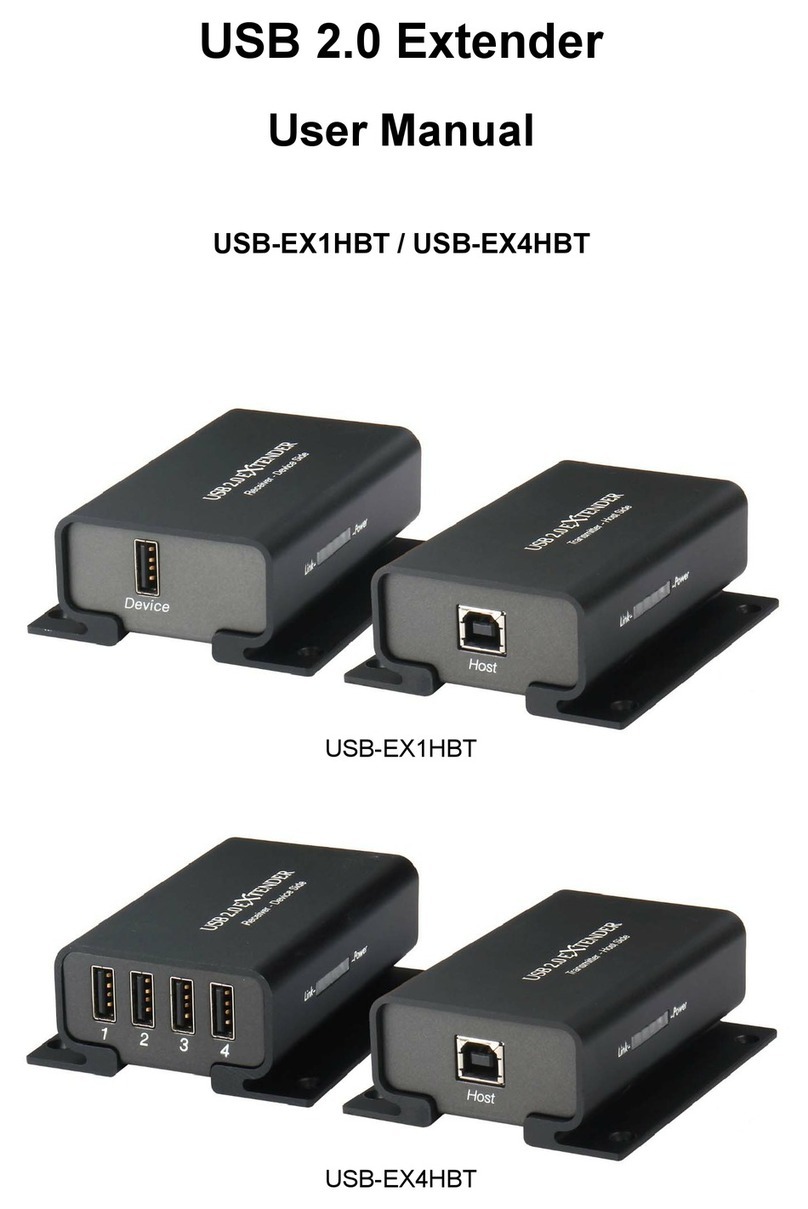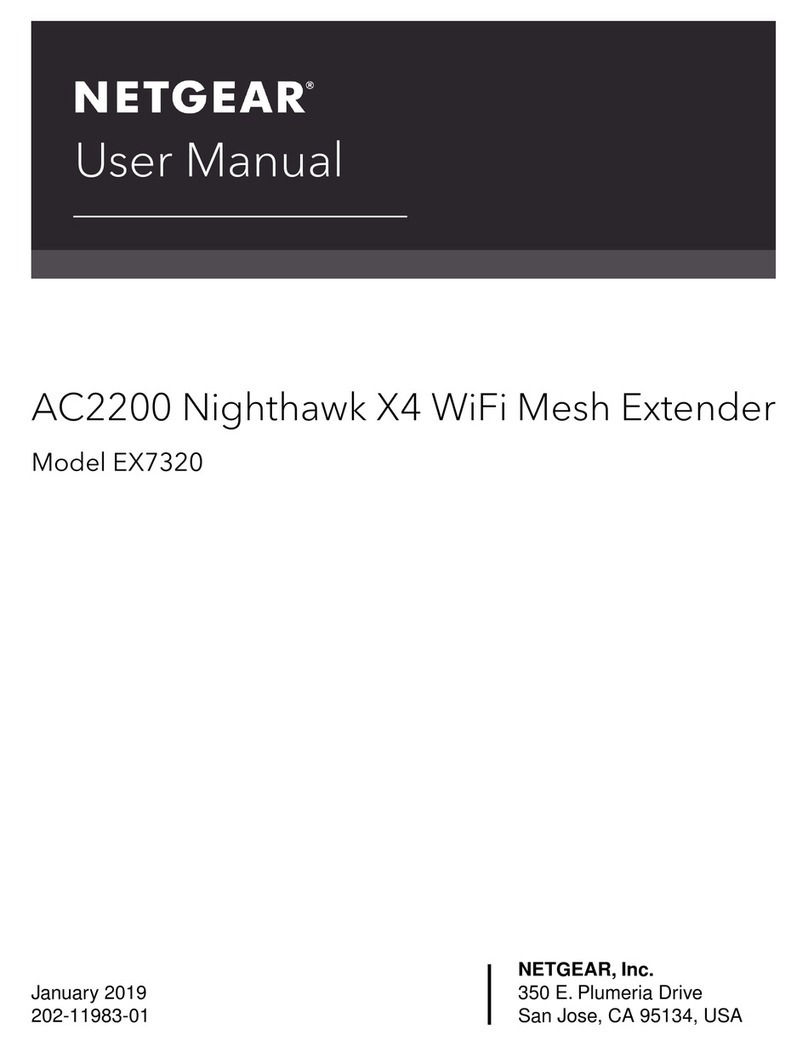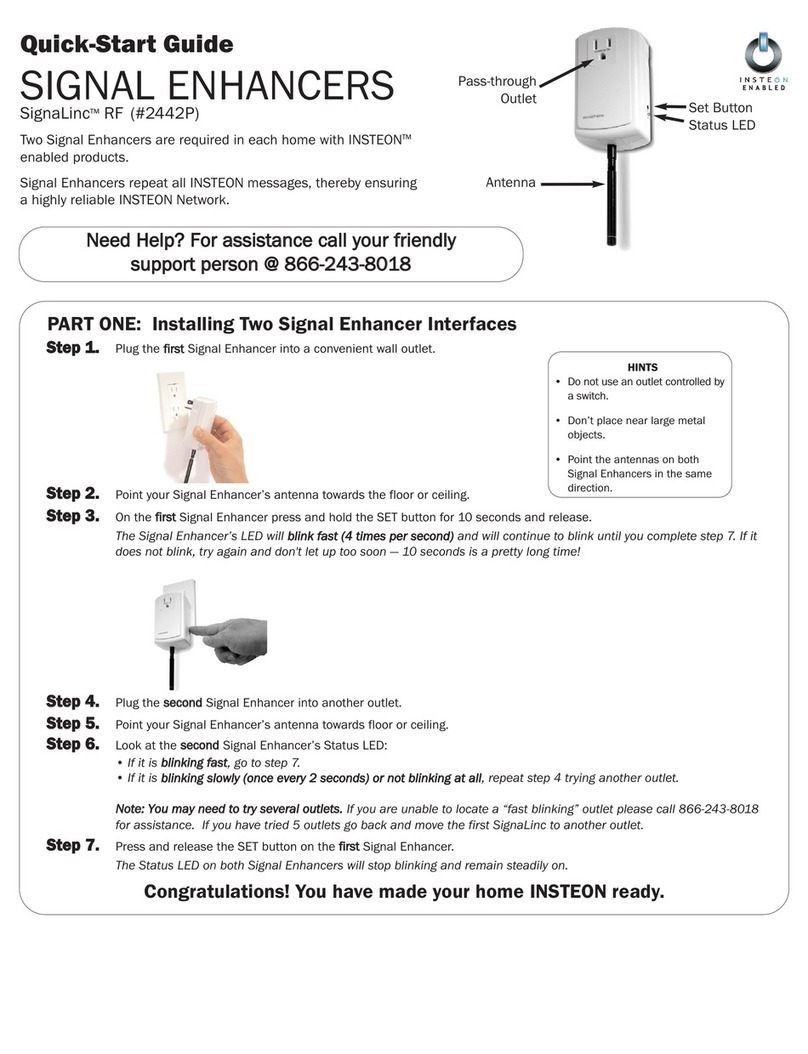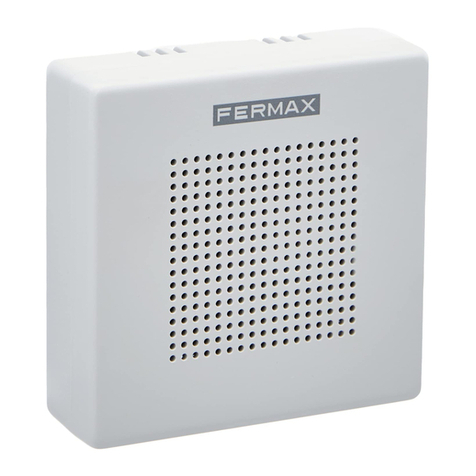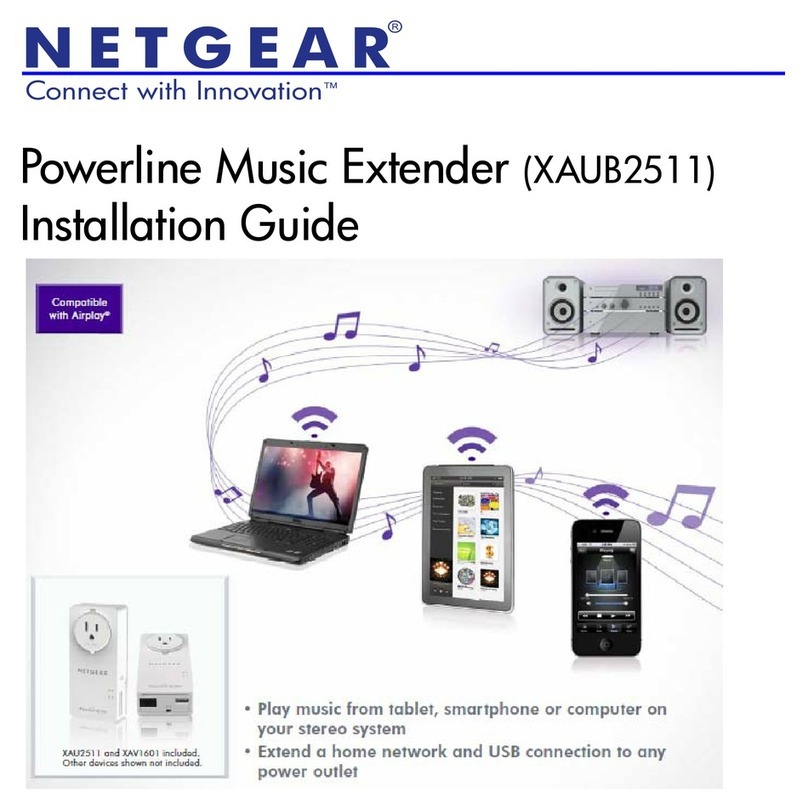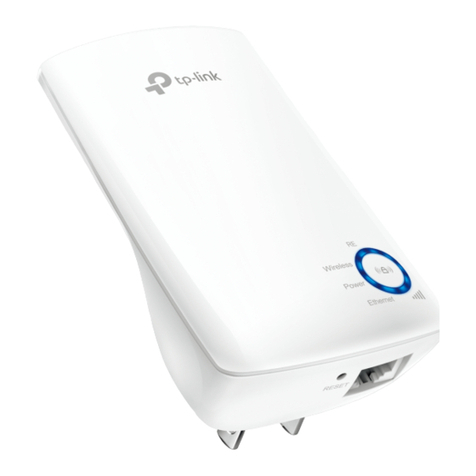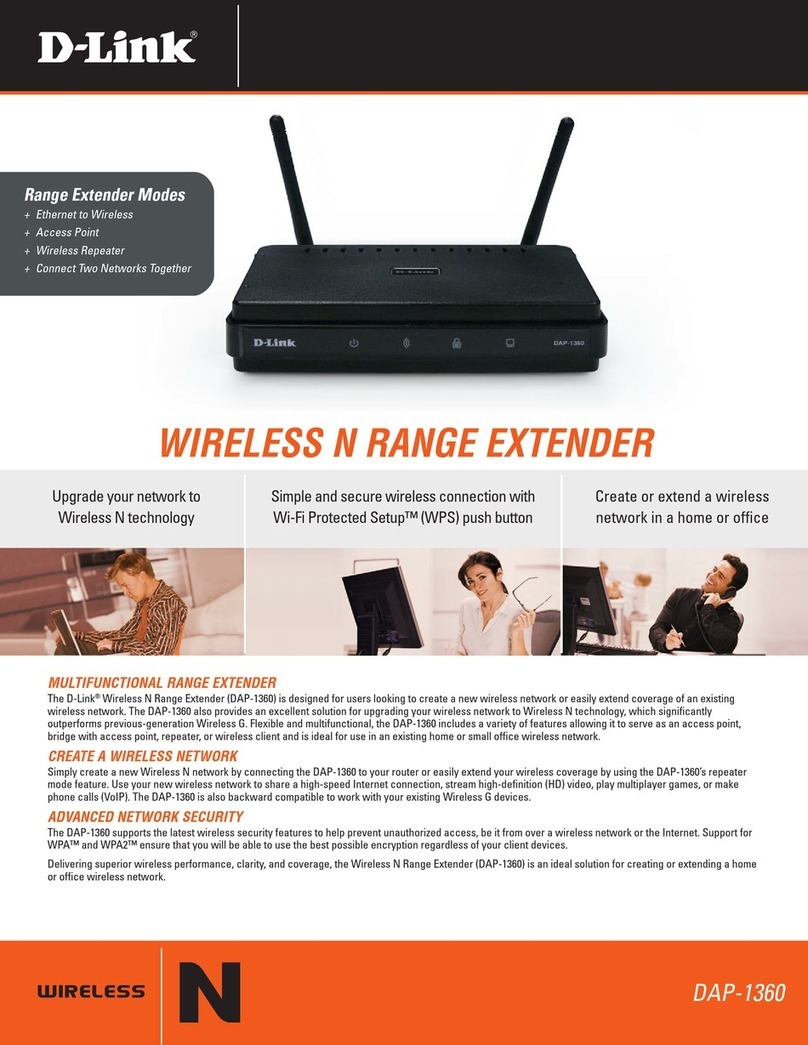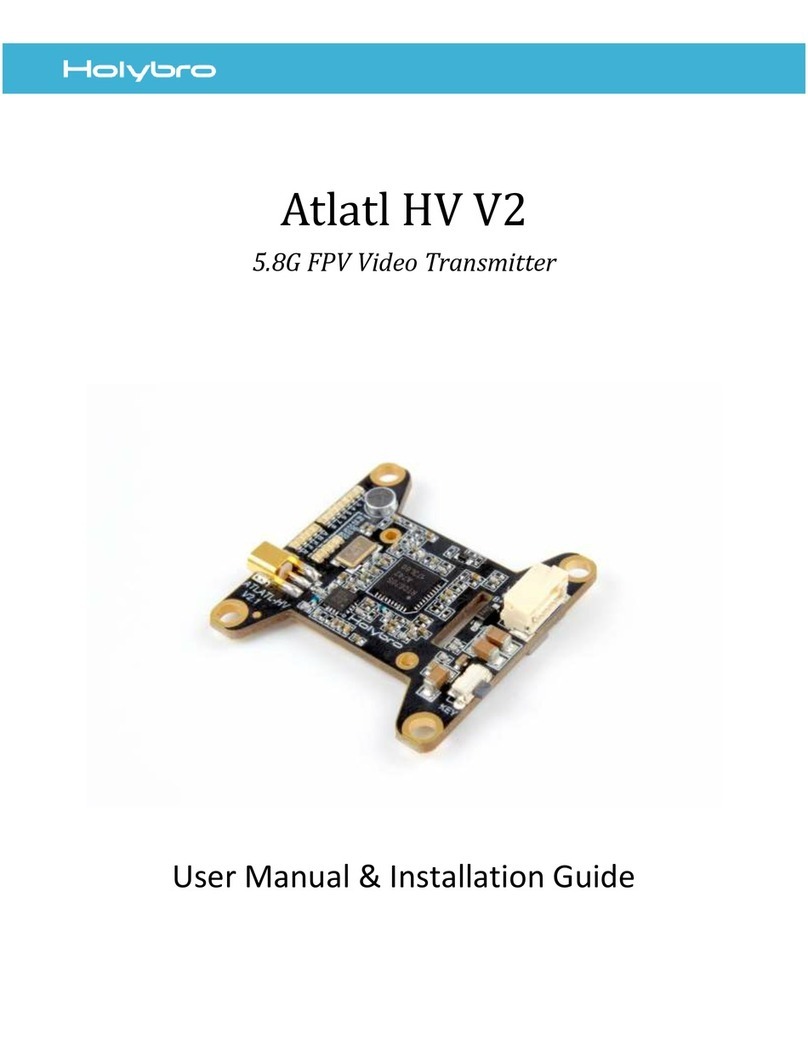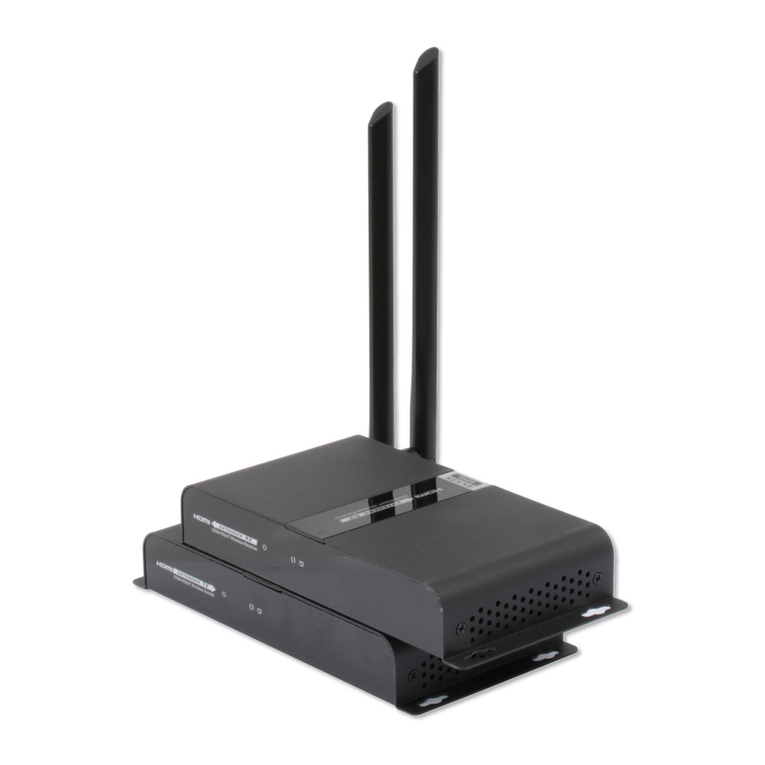Chipset Communication UTS-i101 User manual

Industrially Isolated
USB to RS-232 Extender
Quick Installation Guide
UTS-i101 / UTS-i102
UTS-i101
UTS-i102

1
1. Introduction
The Industrially Isolated USB to 1/2-Port RS-232 Cat.5 extender is a low cost and durable serial solution
that will extend your RS-232 via a single standard Cat.5 / 5e / 6 UTP cable. It features 2.5kV isolation to
ensure sensitive controls and devices for long extending serial signal won’t be damaged. It provides
full-duplex remote access and control of any RS-232 protocol device. The isolated USB to 1/2-Port
RS-232 Cat.5 extender kit consists of a local transmitter and 1 or 2 remote receivers. Allows you placing
RS-232 devices in any location you want and to control them remotely up to 2000 meters (6600 feet).
2. Features
Compatible with all RS-232 protocols.
Extend RS-232 peripherals up to 2000 meters upon transfer rate at 115kbps. (1700m upon
230kbps; 700m upon 921.6kbps)
Fully Compliant with USB specification 1.1 and 2.0
Supports transfer rate up to 921.6kbps.
Supports ±15kV (air), ±8kV (contact) ESD protection; Isolated ground loops
Supports 40A (5/50ns) & Peak Pulse Power 250 W ( 8/20 us ) Surge and Transient spikes
protection
Supports 2.5kV Isolation; Bus powered for local transmitter, external power for remote receiver
Compatible with Windows XP SP3 / Vista / 7 / 8 / 8.1 / 10 / 11, Windows Server 2003 / 2008 /
2008R2 / 2012 / 2012R2, Mac OS 8.6, Linux 1.5.0 or higher
Rugged & cambered Aluminum shell and wall mountable
3. Specifications
Model No.
UTS-i101
DB-9M Pin Assignment
Chip
FTDI
Unit Category
Transmitter
Receiver
Pin No.
Definition
Connector
Host
USB Type B Female
x
1
Output
RJ-45 Female
x
2
RXD
Input
x
RJ-45 Female
3
TXD
Device
x
DB-9 Male
4
DTR
Interconnection Cable
Standard Cat.5 / 5e / 6
5
GND
LED
3 ( TX / RX / PWR )
3 ( TX / RX / PWR )
6
DSR
Power Mode
Bus powered
DC5V
7
RTS
Operating/Storage
Temperature
-40 to 85°C (-40 to 185°F)
8
CTS
Housing
Aluminum
9
Dimension ( L x W x H )
90 x 73 x 31mm
90 x 73 x 31mm
Model No.
UTS-i102
DB-9M Pin Assignment

2
4. Package Contents
Transmitter x 1
Receiver x 1 or 2
5VDC Power adapter x 1 or 2 (for Receiver only)
USB 2.0 AM/BM Cable 0.6m
Rack mountable screws
5. Physical Diagram
5.1 Transmitter (Local Unit) –UTS-i101T
Top view
Front view
Chip
FTDI
Unit Category
Transmitter
Receiver x 2
Pin No.
Definition
Connector
Host
USB Type B Female x 1
x
1
Output
RJ-45 Female x 2
x
2
RXD
Input
x
RJ-45 Female
3
TXD
Device
x
DB-9 Male
4
DTR
Interconnection Cable
Standard Cat.5 / 5e / 6
5
GND
LED
5 ( 2TX / 2RX / ACT )
3 ( TX / RX / PWR )
6
DSR
Power Mode
Bus powered
DC5V
7
RTS
Operating/Storage
Temperature
-40 to 85°C (-40 to 185°F)
8
CTS
Housing
Aluminum
9
Dimension ( L x W x H )
130 x 74 x 30mm
90 x 73 x 31mm
Link port (RJ-45)
Power LED (Red)
TX LED (Green)

3
Side view
Rear view
5.2 Transmitter (Local Unit) –UTS-i102T
Top view
Front view
Rear view
RX LED (Orange)
ACT LED (Red)
Host port (USB B female)
Host port (USB B female)
Link port (RJ45)
TX1 LED (Green)
RX1 LED (Orange)
TX2 LED (Green)
RX2 LED (Orange)

4
5.3 Receiver (Remote Unit)
Top view
Front view
Side view
Rear view
6. Driver Installation thru the FTDI Driver Package
Link port (RJ-45)
Power port (DC5V)
Power LED (Red)
TX LED (Green)
RX LED (Orange)
Serial Out (DB9 Male)

5
Driver can be installed through the FTDI driver package of the CD-ROM provided.
7. USB to Serial Application Operation
Note: The application programmer ‘USB_RS232_AP.exe’ Complies with Windows XP SP3 / Vista /
7 / 8 / 8.1 / 10 or higher only.
You may see detail for the driver & application programmer’s installation steps from the User Manual of
CD-ROM.
Note: Some of host computers have built in USB 3.0 hub may not detect USB to Serial devices
well. In order to prevent detecting failure, to connect to USB 2.0 port would be better.
8. Connecting
8.1 Typical Application
8.2 Installing the Transmitter & Receiver
UTS-i102
Transmitter
UTS-i102
Receivers
PC
Serial Devices
DB9 Serial RS-232
Cable
Cat. 5 Cable
USB AM/BM Cable

6
8.2.1. Preparing for Installation
Follow these steps to prepare your site:
1. Determine where the host computer will be located and set up the computer.
2. Determine where you want to locate the remote USB device(s).
3. The Isolated serial extender supports a maximum distance of 6600 ft (2000m). Make sure that
Cat5 cabling is installed, with Cat. 5 outlets located near both computer and Serial device. The
total length of this cable, including patch cords, must not be longer than 6600 ft (2000m).
Note: If the Cat. 5 cabling is extended over 2000m, the transmission would be affected by
signal attenuation and lower the transfer rate under 115kbps.
8.2.2. Installing the Transmitter (Local Unit)
1. Plug the USB cable into the transmitter (Host) and connect an available USB port of computer.
2. Power LED or ACT LED indicator lights on.
3. Plug one end of the Cat. 5 cable(s) into the Link port (RJ-45) on the transmitter. (Please see
Category cable wiring)
8.2.3. Installing the Receiver (Remote Unit)
1. Plug the other end of the Cat. 5 cable(s) into the Link port (RJ-45) on the receiver(s).
2. Plug the 5VDC power adapter into the receiver(s), and AC plug into the power receptacle.
3. Power LED indicator lights on.
4. Connect the serial device(s) through DB9 serial RS232 cable into the DB9 port (Serial Out) of
receiver.
LED for UTS-i101
Status
Definition
Color
Power
Red
USB cable connected to the transmitter and powered by host
computer.
The 5VDC power adapter is plugged in (Receiver only)
TX
Green
Either transmitter or receiver is sending data.
RX
Orange
Either transmitter or receiver is receiving data.
LED for UTS-i102
Status
Definition
Color
ACT
Red
USB cable connected to the transmitter and powered by host
computer.
TX1/TX2
Green
Transmitter is sending data.
RX1/RX2
Orange
Transmitter is receiving data.
Power
Red
The 5VDC power adapter is plugged in (Receivers only)
TX
Green
Receiver is sending data.
RX
Orange
Receiver is receiving data.
9. Category cable wiring
Take precaution selecting the Cat. 5 wires before connecting; use a cable tester to check the wires are
correctly terminated. (Incorrect Termination may cause damage to the receiver unit). Recommend to use
T568B wiring as shown below
Regulatory Compliance

7
WEEE (Waste of Electrical and Electronic Equipment),
Recycling of Electronic Products
Disclaimer
Information in this document is subject to change without notice. The manufacturer does not make any representations or
warranties (implied or otherwise) regarding the accuracy and completeness of this document and shall in no event be liable
for any loss of profit or any other commercial damage, including but not limited to special, incidental, consequential, or other
damages.
No part of this document may be reproduced or transmitted in any form by any means, electronic or mechanical, including
photocopying, recording or information recording and retrieval systems without the express written permission of the
manufacturer.
All brand names and product names used in this document are trademarks, or registered trademarks of their respective
holders.
CE Certification
This equipment complies with the requirements relating to electromagnetic compatibility.
It has been manufactured under the scope of RoHS compliance.
FCC Compliance Statement
This equipment generates and uses radio frequency and may cause interference to radio and television reception if not
installed and used properly. This equipment has been tested and found to comply with the limits of a Class B digital device,
pursuant to part 15 of the FCC Rules. These limits are designed to provide reasonable protection against harmful
interference in a residential installation.
You are cautioned that changes or modification not expressly approved by the party responsible for compliance could void
your authority to operate the equipment.
This device complies with part 15 of the FCC Rules. Operation is subject to the following two conditions:
(1) This device may not cause harmful interference, and
(2) This device must accept any interference received, including interference that may cause undesired operation
In 2006 the European Union introduced regulations (WEEE) for the collection and recycling of all waste electrical and
electronic equipment. It is no longer allowable to simply throw away electrical and electronic equipment. Instead, these
products must enter the recycling process.
Each individual EU member state has implemented the WEEE regulations into national law in slightly different ways. Please
follow your national law when you want to dispose or any electrical or electronic products. More details can be obtained from
your national WEEE recycling agency.
This manual suits for next models
1
Table of contents
Other Chipset Communication Extender manuals
Popular Extender manuals by other brands
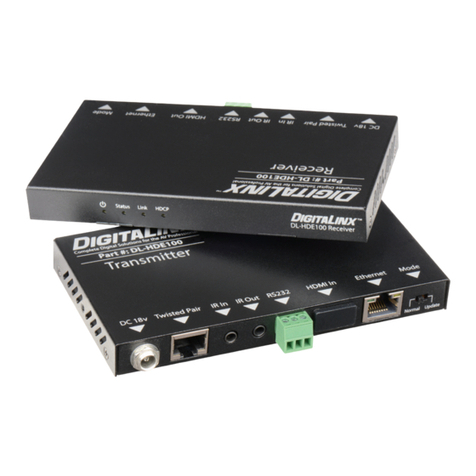
DigitaLinx
DigitaLinx DL-HDE100 installation guide
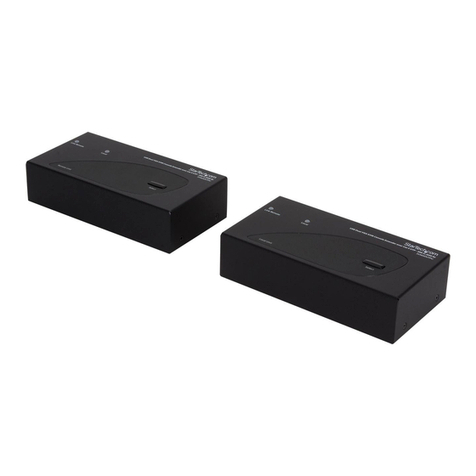
StarTech.com
StarTech.com SV565DUTPU owner's guide
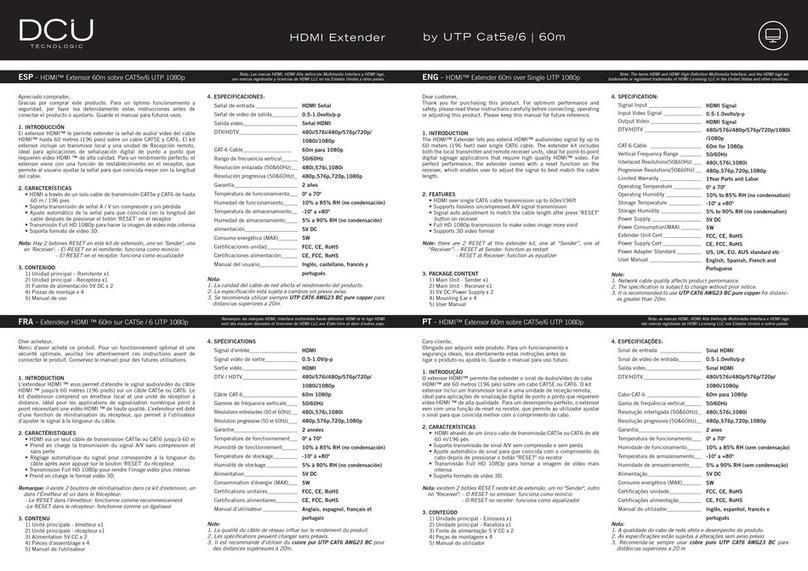
DCU Tecnologic
DCU Tecnologic 30505090 quick start guide
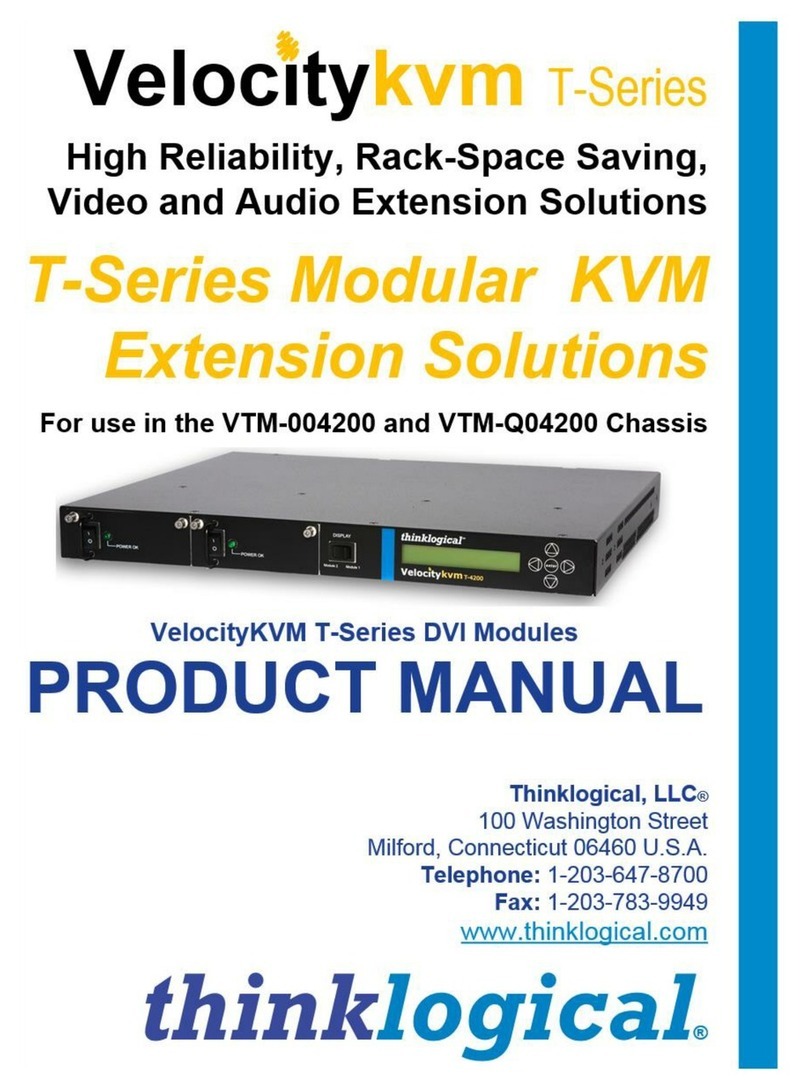
Thinklogical
Thinklogical VelocityKVM VTM-004200 product manual

MuxLab
MuxLab 500753 Quick installation guide
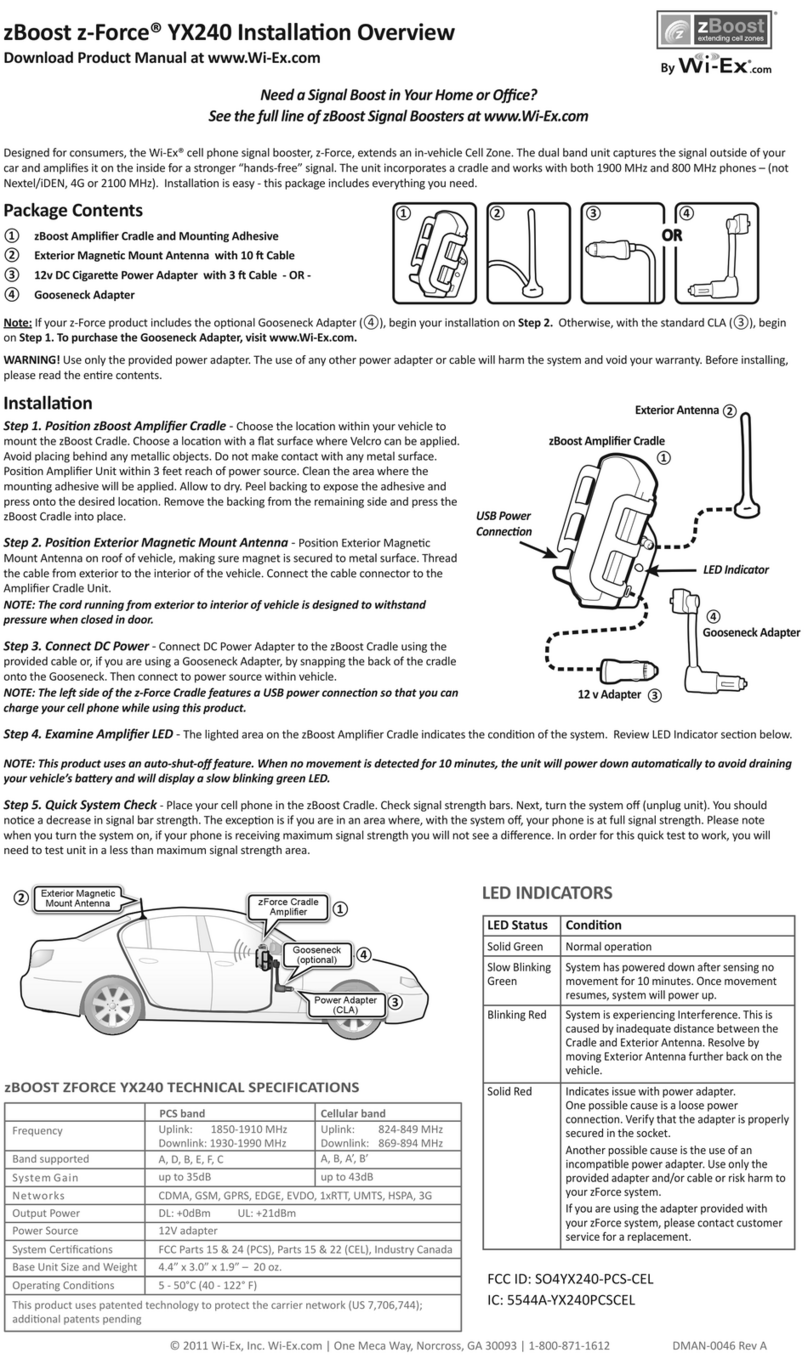
Wi-Ex
Wi-Ex zBoost z-Force YX240 Installation overview
